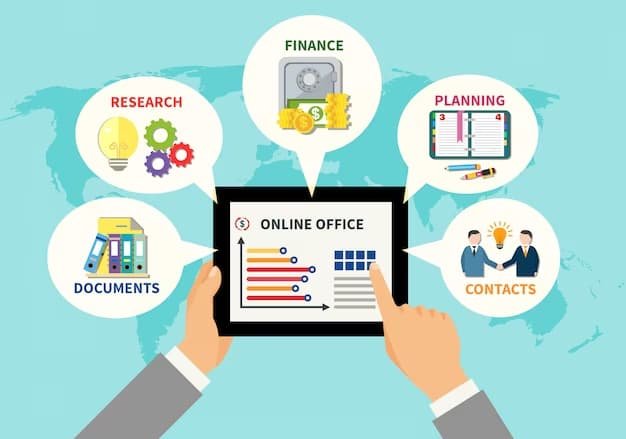In the digital age, e-commerce has transformed the way businesses operate, buy, and sell products or services. With the rapid growth of online shopping and transactions, accounting for e-commerce has become more complex and crucial than ever before. Whether you’re an e-commerce entrepreneur or an accounting professional, understanding how to manage online finances is essential for success in this dynamic and competitive landscape.
The E-Commerce Revolution

The e-commerce revolution has disrupted traditional retail and ushered in a new era of online shopping. This transformation has brought with it several key features that make e-commerce accounting distinct from traditional accounting:
1. Multichannel Sales
E-commerce businesses often operate on multiple online platforms and marketplaces, such as their website, Amazon, eBay, and more. This multichannel approach offers opportunities for revenue growth but also presents accounting challenges.
2. High Transaction Volumes
The volume of transactions in e-commerce can be substantial, even for small businesses. Properly recording and reconciling these transactions is a critical aspect of e-commerce accounting.
3. Sales Tax Complexities
E-commerce businesses must navigate complex sales tax regulations that vary by state and sometimes by product type. Managing sales tax compliance is a critical accounting task.
4. Inventory Management
Efficiently managing and valuing inventory is vital for e-commerce success. Inventory accounting methods must align with the business model, whether it’s dropshipping, warehousing, or a hybrid model.
Key Principles of E-Commerce Accounting
Now that we’ve highlighted the unique challenges of e-commerce accounting, let’s delve into the key principles and best practices to help businesses manage their online finances effectively:
1. Separate Business and Personal Finances
One of the first steps in e-commerce accounting is to establish a clear separation between personal and business finances. Create a dedicated business bank account and credit card to streamline financial transactions and maintain proper records.
2. Accurate Record-Keeping

Accurate and timely record-keeping is the cornerstone of accounting for e-commerce. It’s crucial to document all financial transactions, including sales, expenses, and refunds. E-commerce accounting software, like QuickBooks or Xero, can greatly assist in this process.
3. Understand Your Revenue Streams
Different e-commerce models generate revenue in distinct ways. For instance, if you’re operating an online store, you’ll have income from product sales. If you’re running a subscription box service, you’ll have recurring revenue. Understanding your revenue streams is vital for proper accounting.
4. Sales Tax Compliance
As mentioned earlier, e-commerce sales tax compliance is a complex and evolving issue. Consult with a tax professional or use specialized software to ensure that you’re collecting and remitting sales tax appropriately, based on the location of your customers.
5. Inventory Management
Effectively managing your inventory is essential for maintaining cash flow and accurately reporting financials. Implement an inventory tracking system to monitor stock levels, COGS (Cost of Goods Sold), and inventory valuation.
6. Financial Reporting
Regular financial reporting is key to monitoring the health of your e-commerce business. Balance sheets, income statements, and cash flow statements provide insights into your financial performance.
7. Accounting Software
Consider using accounting software tailored to e-commerce. These platforms often integrate with popular e-commerce platforms, making it easier to track sales, inventory, and expenses.
E-Commerce-Specific Accounting Challenges

While the principles mentioned above are foundational, e-commerce accounting does come with its set of unique challenges. Let’s explore a few of these challenges in detail:
1. Payment Processor Reconciliation
E-commerce businesses frequently rely on payment processors like PayPal or Stripe. Reconciling transactions between your website, payment processor, and bank accounts can be a complex task, but it’s crucial for accuracy.
2. Chargebacks and Refunds
E-commerce businesses must account for chargebacks and refunds. Properly recording these events is essential to maintain accurate financial statements.
3. Platform Fees
Online marketplaces like Amazon often charge fees for using their platform. These fees impact your profit margins and need to be accurately recorded.
4. Currency Conversion
For international e-commerce, currency conversion can create accounting challenges. Ensure you account for exchange rate fluctuations when reconciling financials.
5. Third-Party Integration
Many e-commerce businesses use various third-party tools and integrations for marketing, inventory management, and customer relationship management. These integrations can impact your financial data, so it’s vital to maintain consistency and accuracy.
Reporting and Analysis

Once you’ve established a robust accounting system for your e-commerce business, it’s time to leverage financial data for strategic decision-making. Here are some key areas where financial reporting and analysis can drive growth:
1. Profit Margins
Analyze your profit margins on different products or product categories. This information can help you optimize pricing and marketing strategies.
2. Customer Insights
Understand your customer acquisition cost, lifetime value, and purchase behavior. This data can guide your marketing efforts and customer retention strategies.
3. Inventory Turnover
Monitor your inventory turnover rate to ensure that you’re not tying up excessive capital in unsold products. This can be particularly important for businesses with perishable goods or seasonal products.
4. Sales Trends
Identify trends in your sales data. Seasonal patterns, product popularity, and marketing campaign effectiveness can all be gleaned from your financial reports.
5. Cash Flow Management
Maintain a healthy cash flow by monitoring accounts payable and receivable. Identify potential cash flow bottlenecks and take proactive steps to address them.
If you plan to study accounting course, Click Here…
Conclusion
E-commerce Accounting for businesses can be complex, but it’s a critical aspect of success in the digital marketplace. By following best practices for e-commerce accounting, such as separating personal and business finances, accurately recording transactions, and using specialized software, you can streamline your financial management and make informed decisions for the growth of your online business. E-commerce accounting is an ongoing process that requires diligence and a commitment to staying up to date with evolving financial regulations and industry trends. With a solid financial foundation, your e-commerce business can thrive in this exciting digital landscape.


